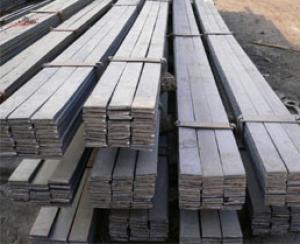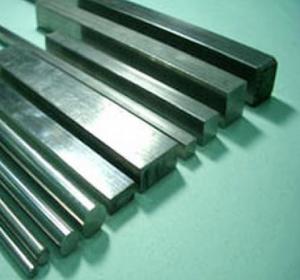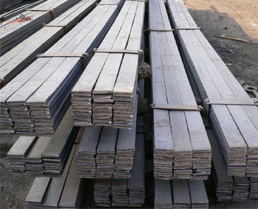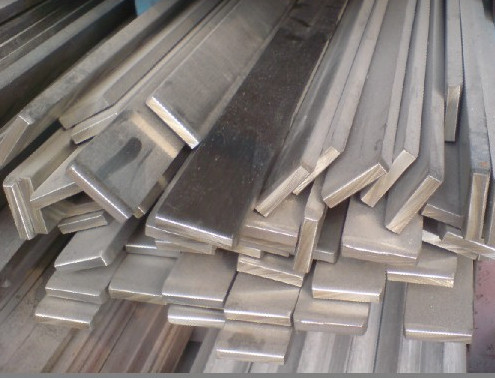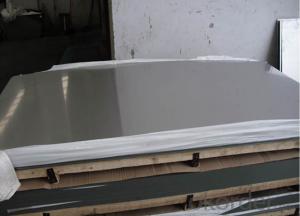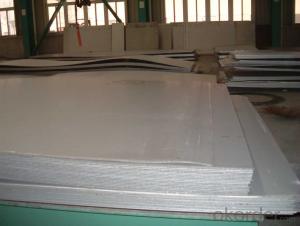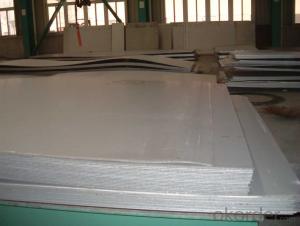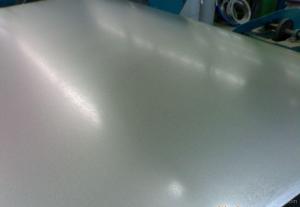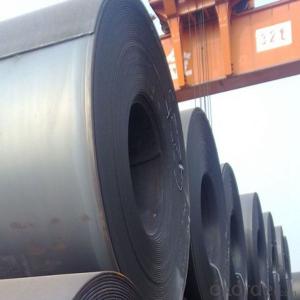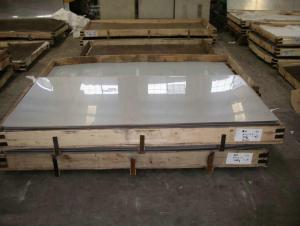High Quality Stainless Steel Profile Tube Pipe with Better Price
- Loading Port:
- Shanghai
- Payment Terms:
- TT OR LC
- Min Order Qty:
- 50 m.t.
- Supply Capability:
- 5000 m.t./month
OKorder Service Pledge
OKorder Financial Service
You Might Also Like
Product Introduction:
Our Stainless Steel products including the stainless steel sheet/plate, stainless steel coil, stainless steel rod/bar, stainless steel angle, stainless steel strip, stainless steel flat, carbon steel products and alloy steel materials. It also can supply the processing of surface, like No.4, BA, HL, SB, 8K, and so on.
Loading Quantity: 25 Tons/20FCL.
Grade: 201, 306, 316 Etc.
Delivery Time: 20 days Per Container.
Application:
| Finish | Thickness | Characteristics | Applications |
| No. 1 | 3.0mm~50.0mm | Finished by hot-rolling, annealing and pickling, characterized by white pickled surface | Chemical industry equipment, Industrial tanks |
| No. 2B | 0.3mm~6.0mm | Finished by heat treatment, pickling after cold rolling, followed by skin pass line to be more brighter and smooth surface | General Application Medical Instruments,Tableware |
| No. BA (Bright Annealed) | 0.5mm~2.0mm | Bright heat treatment after cold rolling | Kitchen utensil, kitchen ware,architectural purpose |
| No. 4 | 0.4mm~3.0mm | Polishing with No. 150 to No.180 mesh abrasivesThe most popular finishes | Milk & Food processing acilities, Hospital Equipment, Bath-tub |
| HL(Hair Line) | 0.4mm~3.0mm | Finished by continuous linear polishing | Architectural purposes, escalators, kitchen ware vehicles |
Packaging & Delivery
| Packaging Detail: | standard seaworthy export package or as customers required |
| Delivery Detail: | Normally according to the order quantity or upon negotiation. |
Specification:
1).Standard : GB,ASTM,AISI,JIS,SUS,EN
2).Material : 304,304L,304N,304LN,301,305,309S,310S,316,316L,316N,316LN,316Ti,
317,317L,321,347,201,202
3).Outside Diameter: From 4mm to 2500mm(1/8''inch-120''inch)
4).Wall Thickness : Sch5S-SchXXS(1mm-150mm)
5). Length : 3m,4m,5.8m,6m,12m or as required
6). Chemical composition:
7).Surface :Annealing ,polish,pickling,bright ,sand blast ,etc
8).Packing: 1.plastic cap with both ends 2.steel strip bundled package3.wooden case,wooden
pallet package4.container or bulk 5. as customers' requestment
9).Application:petroleum ,chemical industry,bolier ,heat exchange,high temperature
resistant transmission fluid pipe in power station,ship with pressure pipe,construction
and so on
- Q: 304 how can the water stain on the surface of stainless steel plate be formed?
- This is mainly the unclean environment and surface protection measures are not done well, stainless steel plate surface water stains even if frosted, not necessarily can be worn off
- Q: Can stainless steel sheets be used for mezzanine flooring?
- Yes, stainless steel sheets can be used for mezzanine flooring. Stainless steel is a durable and corrosion-resistant material, making it suitable for various applications including flooring. It has high strength and can withstand heavy loads, making it ideal for mezzanine structures. Additionally, stainless steel sheets can be easily cleaned and maintained, ensuring a hygienic and aesthetically pleasing flooring option.
- Q: What are the different finishes available for stainless steel sheets?
- Stainless steel sheets come in various finishes, each offering a distinct appearance and level of protection. 1. The most basic and commonly used finish for stainless steel sheets is No. 1 Finish. It is achieved through hot-rolling, resulting in a rough and dull surface with visible grain lines. This finish is typically utilized in industrial applications where aesthetics are not a primary concern. 2. For a brighter and slightly reflective finish, No. 2B Finish is preferred. This cold-rolled finish boasts a smooth surface with a matte appearance, making it ideal for decorative purposes like architectural applications or kitchen appliances. 3. No. 4 Finish, also known as brushed or satin finish, possesses a distinctive look due to its fine polishing grit lines. It is commonly used for decorative applications, such as elevator doors or trim, as it can effectively conceal minor surface imperfections. 4. If a highly reflective finish is desired, No. 8 Mirror Finish is the way to go. It offers a smooth and shiny surface akin to a mirror's polish. This finish is commonly chosen for decorative purposes like architectural features or decorative trim. 5. The Hairline Finish provides a refined and elegant appearance with its fine, brushed texture resembling hair grain. It is commonly employed in decorative and architectural applications. 6. To add texture and visual interest to stainless steel sheets, the Embossed Finish is created through embossing or stamping, resulting in a pattern or design on the surface. This finish is often used for decorative purposes. It is important to note that the availability of these finishes may vary depending on the supplier and the specific grade of stainless steel being used.
- Q: Can stainless steel sheets be used for decorative screens?
- Definitely! Decorative screens can be made using stainless steel sheets. Stainless steel is a highly flexible material, often chosen for its pleasing appearance and long-lasting nature. It can be effortlessly molded into different patterns, making it perfect for crafting decorative screens. Moreover, stainless steel is resistant to rust and can endure extreme weather conditions, making it suitable for both indoor and outdoor purposes. Its smooth and contemporary look enhances any area, making stainless steel sheets a favored option for decorative screens in homes and businesses alike.
- Q: How do you remove fingerprints from stainless steel sheets?
- If you want to remove fingerprints from stainless steel sheets, there are several effective methods to consider: 1. Begin by using warm soapy water and a soft cloth or sponge. Dampen the cloth or sponge and gently rub the affected area in circular motions. Afterward, rinse the cloth or sponge and wipe away any soap residue. Finally, dry the stainless steel sheet using a clean, lint-free cloth. 2. Another option is to create a vinegar solution by mixing equal parts white vinegar and water in a spray bottle. Directly spray the solution onto the fingerprints and allow it to sit for a few minutes. Then, use a soft cloth to wipe the surface in circular motions, ensuring to follow the grain of the stainless steel. Rinse the cloth and remove any remaining vinegar. Thoroughly dry the sheet. 3. You can also try using a small amount of glass cleaner sprayed onto a soft cloth. Gently rub the fingerprints in circular motions, following the grain of the stainless steel. Repeat if necessary, rinsing the cloth and reapplying cleaner as needed. Finally, dry the surface with a clean cloth. 4. If you prefer, there are various commercial stainless steel cleaners available that effectively eliminate fingerprints. Follow the instructions on the product and apply it to the affected areas. Use a soft cloth to wipe the surface, following the grain of the stainless steel, and buff it to achieve a shine. Always read and adhere to any safety precautions mentioned on the product. Remember to test any method on a small, inconspicuous area first to ensure it does not cause damage or discoloration to the stainless steel sheet. Additionally, avoid using abrasive cleaners or scrub brushes as they can scratch the surface. By properly caring for and regularly cleaning your stainless steel sheets, you can maintain a shiny, fingerprint-free appearance.
- Q: Are stainless steel sheets suitable for automotive grilles or trim?
- Yes, stainless steel sheets are highly suitable for automotive grilles or trim. Stainless steel is a durable and corrosion-resistant material that can withstand the harsh conditions of the automotive environment, including exposure to moisture, road salt, and varying temperatures. It is also known for its strength and can provide excellent protection to the vehicle's front end. Moreover, stainless steel sheets can be easily formed and molded into various shapes and designs to meet the specific styling requirements of automotive grilles or trim. Additionally, stainless steel has an attractive aesthetic appeal that can enhance the overall look of the vehicle. Overall, the use of stainless steel sheets for automotive grilles or trim ensures longevity, functionality, and a polished appearance.
- Q: Can stainless steel sheets be used for kitchen backsplashes?
- Yes, stainless steel sheets can be used for kitchen backsplashes. Stainless steel is a popular choice for kitchen backsplashes due to its durability, resistance to heat and moisture, and easy maintenance. It provides a sleek and modern look to the kitchen while also protecting the wall from splatters and stains. Additionally, stainless steel sheets are available in various finishes, such as brushed, mirrored, or patterned, allowing homeowners to choose the style that best complements their kitchen design.
- Q: Do stainless steel sheets require any special handling during installation?
- Special handling is necessary when installing stainless steel sheets. Here are some important factors to consider: 1. Prevent Contamination: Stainless steel is easily contaminated by carbon steel, dirt, and grease. It is vital to ensure that the installation area is clean and free from potential contaminants. Additionally, the tools used for installation should be clean and free from other metals. 2. Protect from Scratches: Stainless steel sheets are prone to scratching during installation. It is crucial to handle them carefully and use protective coverings or wraps to prevent any damage. Furthermore, using non-abrasive tools and avoiding dragging or sliding the sheets across surfaces can help maintain their integrity. 3. Use Proper Fixing Techniques: Mechanical fasteners or adhesives are typically used to secure stainless steel sheets. It is essential to follow the manufacturer's recommendations or industry best practices for the specific installation method. This includes using the correct type and size of fasteners and ensuring they are properly tightened without causing damage. 4. Account for Expansion and Contraction: Stainless steel sheets expand or contract with temperature changes. During installation, it is necessary to provide adequate clearance or use expansion joints to accommodate this movement. Failure to consider thermal expansion can result in buckling, warping, or stress on the sheets. 5. Prevent Galvanic Corrosion: Direct contact between stainless steel sheets and dissimilar metals, especially those with higher galvanic potential, can lead to galvanic corrosion. To prevent this type of corrosion, it is important to use compatible materials and insulate stainless steel sheets from direct contact with other metals. By adhering to these special handling guidelines, stainless steel sheets can be installed correctly, ensuring their aesthetic appeal and durability are maintained over time.
- Q: Are stainless steel sheets fire resistant?
- Stainless steel sheets have excellent fire resistance properties. Due to their high melting point and low thermal conductivity, stainless steel is able to withstand high temperatures for prolonged periods of time without undergoing significant structural changes or losing their strength. This makes stainless steel sheets highly resistant to fire and heat damage. Additionally, stainless steel does not release toxic fumes when exposed to fire, which further enhances its safety in fire-prone environments. As a result, stainless steel sheets are commonly used in applications where fire resistance is a critical requirement, such as in the construction of fire doors, fire escapes, and fire-resistant enclosures.
- Q: Are stainless steel sheets suitable for heat exchangers?
- Yes, stainless steel sheets are suitable for heat exchangers. Stainless steel has excellent thermal conductivity, which means it can efficiently transfer heat between fluids. Additionally, stainless steel is highly resistant to corrosion and oxidation, making it ideal for applications where it will come into contact with various fluids or gases at different temperatures. Its durability and ability to withstand high temperatures also make it a reliable choice for heat exchangers. Overall, stainless steel sheets are a popular and reliable material for heat exchangers due to their thermal conductivity, corrosion resistance, and durability.
Send your message to us
High Quality Stainless Steel Profile Tube Pipe with Better Price
- Loading Port:
- Shanghai
- Payment Terms:
- TT OR LC
- Min Order Qty:
- 50 m.t.
- Supply Capability:
- 5000 m.t./month
OKorder Service Pledge
OKorder Financial Service
Similar products
Hot products
Hot Searches
Related keywords
